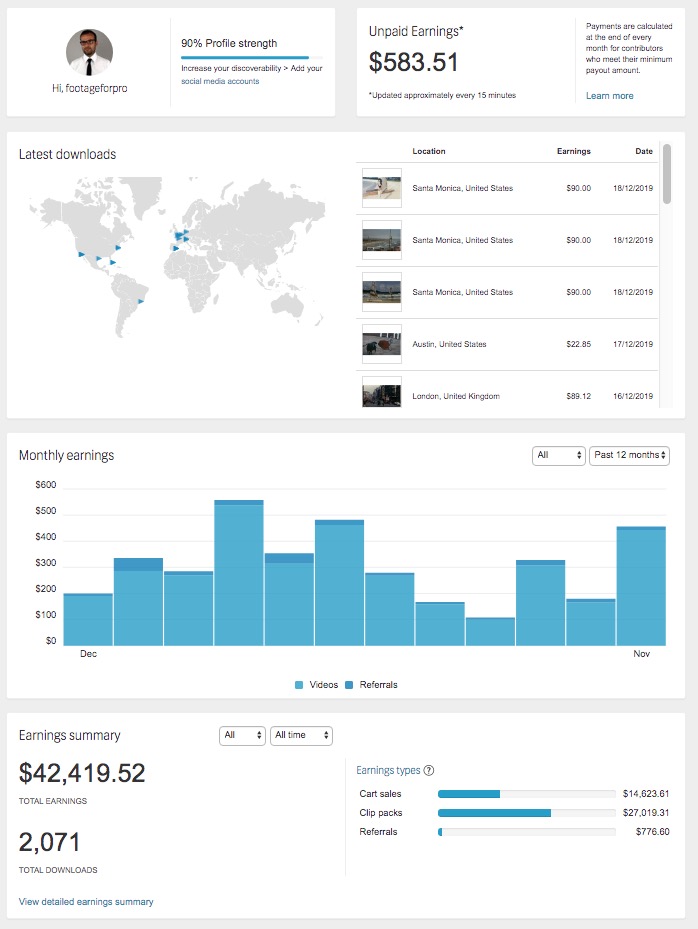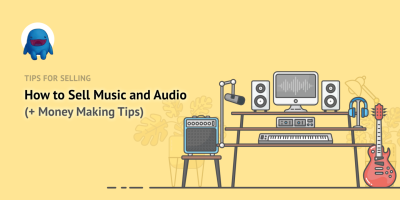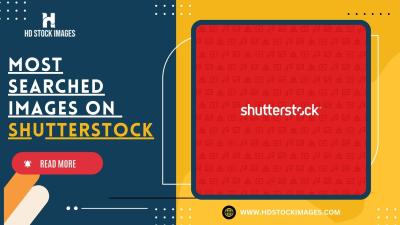Hey there! If you’re a small business owner looking to spice up your marketing materials, social media, or website with high-quality images and videos, you’ve probably come across Shutterstock. It’s one of the biggest names in stock media, offering a vast library of photos, illustrations, videos, and music. But with so many options available, it’s easy to wonder, “Is it worth the cost?” In this post, we’ll break down what Shutterstock offers specifically for small businesses and help you understand the actual costs involved. Let’s dive in and see how
Pricing Plans Available for Small Business Owners
When it comes to pricing, Shutterstock has a few different plans tailored for small business owners, freelancers, and even individual creators. Here’s a quick rundown of the most common options:
| Plan | Images/Assets Included | Price Range | Best For |
|---|---|---|---|
| On-Demand Packs | Buy a set number of images or assets upfront (e.g., 10, 20, 50) | Starting at around $29 for 10 images | Occasional use, small projects |
| Monthly Subscriptions | Download a set number of assets each month (e.g., 10, 20, 30) | From $29/month for 10 images to $99/month for 50 images | Regular content needs, ongoing marketing |
| Enterprise & Custom Plans | Unlimited downloads or tailored packages | Pricing varies, contact sales for quotes | Large teams, agencies, or high-volume users |
For most small businesses, the subscription plans are the most cost-effective, especially if you frequently need fresh visuals. You can start small with a plan that fits your projected monthly needs and scale up as your business grows. Keep in mind, if you only need images now and then, on-demand packs can be a flexible and affordable route. Just be aware that costs can add up if you need a lot of assets regularly, so it’s worth planning your usage to avoid surprises.
Overall, Shutterstock offers a variety of pricing options, making it easier for small businesses to find a plan that suits their budget and creative needs. The key is to assess how often you’ll need new images or videos and choose a plan that aligns with your marketing schedule. Remember, investing in good visuals can pay off by making your brand look more professional and engaging!
Factors That Influence Shutterstock Pricing
When it comes to understanding how Shutterstock prices its images and subscriptions, it’s not just a straightforward sticker price. Several key factors come into play that can make the costs vary quite a bit depending on your needs. Let’s break down the main elements that influence Shutterstock’s pricing so you can better plan your budget.
1. Type of License
Shutterstock offers different types of licenses to suit various usage needs. The two main categories are:
- Standard License: Suitable for most marketing and personal projects. It generally covers online use, social media, and small print runs.
- Enhanced License: Designed for larger-scale uses like merchandise, product packaging, or high-volume print runs. This license tends to cost more but provides broader rights.
The license type you select can significantly impact your total cost, especially if you need wide-ranging rights or plan on using the images in commercial products.
2. Subscription Plans vs. On-Demand Purchases
Shutterstock offers flexible purchasing options:
- Subscriptions: Ideal if you need multiple images regularly. They come with a set number of downloads per month or year, often at a discounted rate per image.
- On-Demand Packs: Pay-as-you-go approach. You buy a pack of credits, and each image costs a certain number of credits. This is perfect for occasional use or one-time projects.
The more images you plan to download, the more cost-effective a subscription can be. Conversely, if you only need a few images, on-demand packs might be more economical.
3. Image Resolution and Size
While most images are available in standard resolutions, higher-resolution images or vector files might come at an extra cost or require an upgraded license. Be sure to verify the resolution you need for your project to avoid unexpected charges.
4. Usage Scope and Duration
The intended use — whether online, print, or broadcast — can influence licensing costs. Also, if your project is ongoing or long-term, consider licensing options that accommodate extended or multiple uses, which might come at a premium.
Understanding these factors helps you choose the most economical option suited to your small business needs without overspending. It’s all about balancing your project’s scope, frequency, and usage rights to find the best value.
Comparing Shutterstock Costs with Other Stock Photo Platforms
When you’re on the hunt for stock images, price is definitely a big consideration, but so is value. Let’s take a quick tour of how Shutterstock stacks up against some popular alternatives, so you can make informed decisions for your small business.
Shutterstock vs. Adobe Stock
| Feature | Shutterstock | Adobe Stock |
|---|---|---|
| Pricing Model | Subscriptions or credit packs; discounts on larger plans | Subscription plans and credit packs; often bundled with Adobe Creative Cloud |
| Cost per Image | Starting around $29 for a single image, with discounts for plans | From $29.99 per image in subscription plans, with bulk discounts |
| Library Size | Over 300 million images | Over 200 million images |
Shutterstock vs. iStock by Getty Images
| Feature | Shutterstock | iStock |
|---|---|---|
| Pricing | Flexible plans; lower entry point for small budgets | Credits-based system; starting from around $12 per credit |
| Subscription Options | Yes, with varying download limits | Yes, with different tiers and monthly plans |
So, how do you choose? Well, Shutterstock often provides competitive pricing, especially if you sign up for a subscription, and offers a vast library that’s perfect for diverse needs. Adobe Stock integrates seamlessly if you’re already using Adobe tools, which can save time and streamline your workflow. iStock tends to focus on high-quality curated images, sometimes at slightly higher prices, but it offers exclusive content you won’t find elsewhere.
Ultimately, it’s about matching your budget with your needs. If you’re a small business that needs a flexible, large library, Shutterstock’s plans are often a good deal. If you prefer integration with design tools or specific image exclusivity, exploring the others might be worth it. Remember, most platforms also offer free images or trial periods, so take advantage of those to test before committing.
In conclusion, comparing costs across platforms isn’t just about the sticker price — consider licensing options, image quality, library size, and how well each platform integrates into your workflow. That way, you’ll get the best bang for your buck and find the right platform that supports your small business’s creative needs.
Tips for Maximizing Value and Saving Money on Shutterstock
Now that you have a clearer picture of Shutterstock’s pricing structure, you’re probably wondering how to get the most bang for your buck. The good news is, with a few smart strategies, you can significantly maximize your value and keep costs in check.
First, choose the right plan for your needs. If you’re just starting out or only need a handful of images each month, a smaller subscription might be enough. Conversely, if your business relies heavily on visual content, investing in a larger plan or an on-demand package could save you money in the long run.
Second, take advantage of the search filters and collections. Shutterstock offers tools that help you find exactly what you need quickly. Using these features reduces the time spent searching, which can translate to fewer credits spent on less relevant images.
Third, consider subscribing to Shutterstock’s bulk packs or extended licenses when appropriate. For high-volume projects or commercial use, these options often provide better per-image rates and more flexibility, especially for branding or advertising campaigns.
Fourth, plan your content ahead of time. Batch your image needs for upcoming projects. This way, you can purchase larger packages or subscribe to plans that fit your overall content calendar, avoiding last-minute purchases at higher rates.
Fifth, keep an eye out for promotions and discounts. Shutterstock occasionally offers deals or bundle packages that can lower your costs. Signing up for their newsletter or following them on social media can help you stay informed about these opportunities.
| Tip | Benefit |
|---|---|
| Choose the right plan | Prevents overspending and ensures you only pay for what you need |
| Use search filters | Saves time and helps find quality images quickly |
| Opt for bulk or extended licenses | More flexibility and better value for high-volume use |
| Plan content ahead | Avoid last-minute premium rates and maximize subscription benefits |
| Watch for discounts | Reduce overall costs through promotions and special offers |
Finally, always review the licensing terms carefully. Sometimes, what seems like a small purchase can turn into a costly mistake if the license doesn’t cover your intended use. Being informed helps you avoid unexpected fees and ensures you’re getting the best value for your investment.
Final Thoughts on Shutterstock Pricing for Small Business Success
When it comes to visual content, Shutterstock offers an extensive library and flexible licensing options that can be a game-changer for small businesses. While the costs can add up, understanding their pricing models and strategic planning can make a real difference in your marketing budget.
It’s important to see Shutterstock not just as an expense, but as an investment in your brand’s professionalism and reach. High-quality visuals attract attention, build trust, and can significantly boost conversions. That said, it’s equally vital to be savvy about how you purchase and use these images.
By selecting the right plan, leveraging discounts, and planning your content needs carefully, you can enjoy the benefits of Shutterstock without breaking the bank. Remember, the goal isn’t just to save money but to maximize the value of every dollar spent. Quality visuals can elevate your brand, and smart purchasing strategies ensure you’re getting the most out of your budget.
In the end, successful small businesses often find the right balance—investing enough to stand out and grow, but staying within their financial comfort zone. With a little planning and strategic thinking, Shutterstock can be a powerful ally in your journey to small business success.



